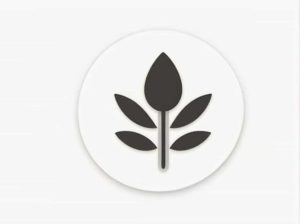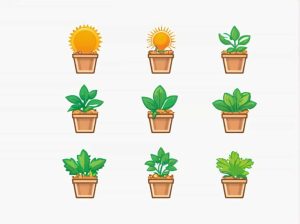The Shasta daisy (Leucanthemum × superbum) is a popular flowering plant known for its bright white petals and yellow center. This beautiful perennial is often found in gardens parks and landscapes due to its resilience and long blooming season. But where did the Shasta daisy originate?
Unlike many wildflowers that naturally evolved over time the Shasta daisy is a man-made hybrid. It was created through selective breeding in the late 19th century by renowned American horticulturist Luther Burbank. The goal was to develop a bigger longer-lasting and more beautiful daisy than any naturally occurring species.
The Creation of the Shasta Daisy
Luther Burbank: The Man Behind the Shasta Daisy
Luther Burbank was an innovative plant breeder known for developing many hybrid plants including the Russet potato and various fruit varieties. He dedicated his life to creating plants with improved characteristics such as disease resistance higher yields and better adaptability.
In the 1890s Burbank set out to create the perfect daisy by combining the best traits from different species. His work took nearly 17 years and involved crossbreeding several daisy varieties from different continents.
The Parent Species of the Shasta Daisy
To develop the Shasta daisy Burbank used four different daisy species from Europe and Asia:
- Oxeye Daisy (Leucanthemum vulgare) – A hardy European wildflower with a simple structure.
- English Field Daisy (Leucanthemum maximum) – Known for its larger flowers.
- Portuguese Field Daisy (Leucanthemum lacustre) – Added disease resistance.
- Japanese Field Daisy (Nipponanthemum nipponicum) – Contributed bright white petals.
By selectively breeding these species Burbank was able to create a daisy with larger blooms stronger stems and a longer blooming season.
Why Is It Called the Shasta Daisy?
Luther Burbank named his new daisy after Mount Shasta a snow-capped mountain in Northern California near his home. He chose this name because the pure white petals of the flower reminded him of the snow-covered peak.
Where Does the Shasta Daisy Grow?
Although the Shasta daisy was developed in California it is now widely grown across North America Europe and other temperate regions. It thrives in gardens meadows and along roadsides due to its low maintenance requirements and ability to withstand different weather conditions.
Ideal Growing Conditions for Shasta Daisy
- Climate: Prefers temperate regions with moderate summers and mild winters.
- Soil: Well-drained soil with moderate fertility.
- Sunlight: Grows best in full sun but can tolerate partial shade.
- Watering: Requires moderate watering but it is drought-tolerant once established.
- Hardiness Zones: USDA zones 4-9.
Characteristics of the Shasta Daisy
1. Appearance
- Flowers: Large white petals surrounding a yellow center (similar to classic daisies).
- Height: Typically grows between 1 to 3 feet tall.
- Leaves: Dark green lance-shaped and slightly serrated.
2. Blooming Season
- Blooms from early summer to late fall in warm climates.
- Deadheading (removing spent flowers) encourages continuous blooming.
3. Perennial Growth Habit
- Returns every year with minimal care.
- Can spread through underground rhizomes or by self-seeding.
Why Gardeners Love the Shasta Daisy
Shasta daisies are a favorite among gardeners due to their easy maintenance and stunning appearance. Some of the reasons why they are so popular include:
- Long blooming season – Provides color for months.
- Drought resistance – Once established they require little water.
- Attracts pollinators – Bees and butterflies love them.
- Deer and rabbit resistant – Unappealing to most garden pests.
- Works well in cut flower arrangements – Long-lasting in vases.
Common Varieties of Shasta Daisy
Over time different cultivars of the Shasta daisy have been developed offering variations in flower size petal shape and plant height. Some popular varieties include:
1. ‘Becky’
- One of the most common and tallest varieties (up to 4 feet).
- Large bright white blooms with a yellow center.
2. ‘Snowcap’
- Compact and dwarf variety (around 12 inches tall).
- Great for borders and small gardens.
3. ‘Crazy Daisy’
- Unique frilly double-layered petals for a fuller look.
- Adds texture and visual interest to flower beds.
4. ‘Banana Cream’
- Pale yellow blooms that fade to white.
- More unusual color compared to classic white Shasta daisies.
How to Grow and Care for Shasta Daisies
1. Planting
- Best planted in early spring or fall.
- Space plants 12-24 inches apart for proper airflow.
- Mix compost into the soil for better drainage and nutrition.
2. Watering
- Water regularly after planting.
- Once established they need less frequent watering.
3. Pruning and Maintenance
- Deadhead flowers to extend blooming.
- Cut back stems in late fall to encourage new growth in spring.
4. Controlling Spread
- Shasta daisies can spread through underground rhizomes.
- Divide plants every 2-3 years to prevent overcrowding.
Common Pests and Diseases
Although generally hardy Shasta daisies can sometimes face pest and disease issues.
1. Pests
- Aphids – Can be controlled with insecticidal soap.
- Slugs and Snails – Use organic repellents like crushed eggshells.
2. Diseases
- Powdery Mildew – Can occur in humid conditions; ensure good air circulation.
- Leaf Spot – Avoid overhead watering to prevent fungal infections.
The Shasta daisy is not a naturally occurring flower but a man-made hybrid developed by Luther Burbank in California. It was named after Mount Shasta and created by crossbreeding several daisy species from Europe and Asia.
Today it is one of the most beloved garden perennials due to its long-lasting blooms ease of care and ability to thrive in various climates. Whether grown in flower beds borders or wild gardens the Shasta daisy continues to be a symbol of beauty and resilience in gardening.



